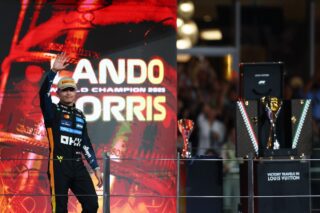This website uses cookies so that we can provide you with the best user experience possible. Cookie information is stored in your browser and performs functions such as recognising you when you return to our website and helping our team to understand which sections of the website you find most interesting and useful.
INTERVIEW: IndyCar driver Sam Schmidt on the long road to recovery
By Rory FH Smith | 4 September 2021 | Cars & Yachts
Schmidt thought he would never race again after a devastating crash left him paralysed. Now, he is back in the drivers seat with the unique Arrow SAM III
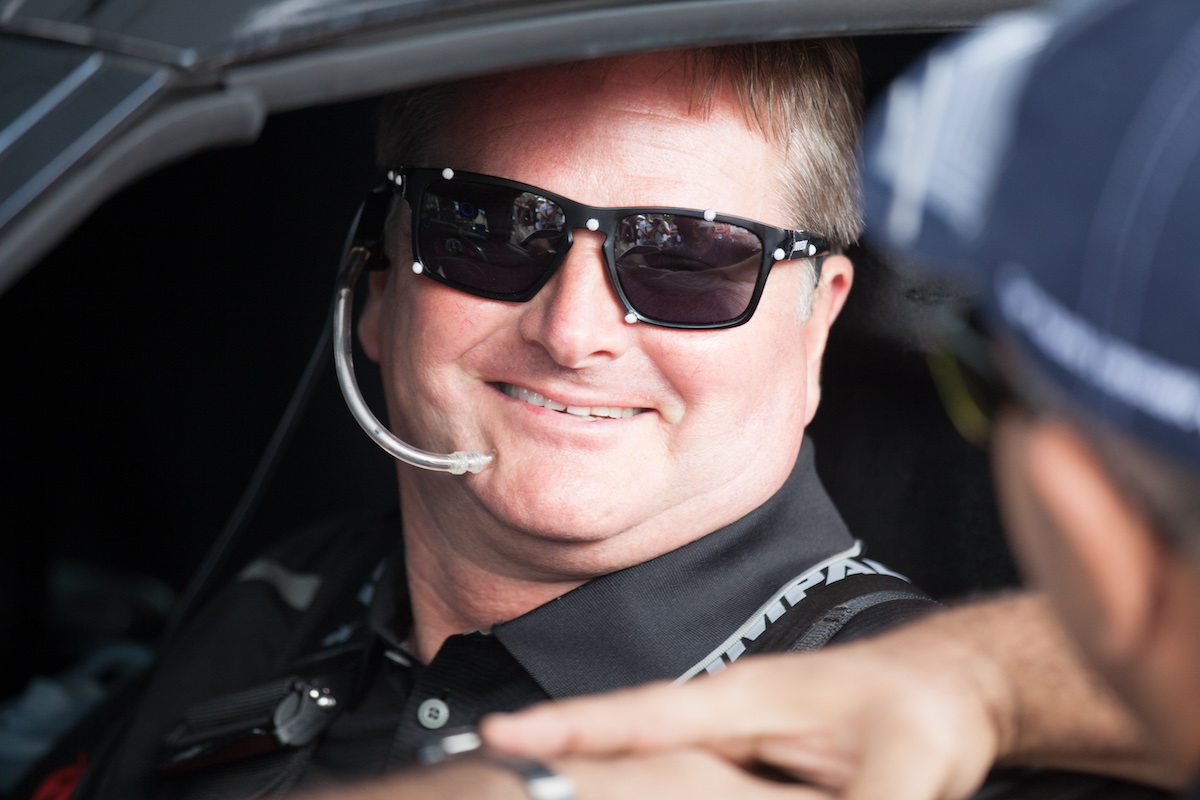
When IndyCar driver Sam Schmidt, driving 200mph, crashed into the barrier during pre-season testing at the Walt Disney World Speedway on 6 January 2000, his doctors thought he wouldn’t make it through the night. Despite surviving the impact, the crash left Schmidt a quadriplegic, destined to never walk again – let alone race.
However, thanks to the cutting-edge AI technology from electrical company Arrow, Nebraska-born Schmidt has continued to defy the odds in his recovery. Not only has the former IndyCar racer been able to walk again with the help of a bespoke semi-autonomous exoskeleton suit, but he’s also back in the driver’s seat, behind the wheel of a highly modified 200mph 2020 C8 Corvette.
Made in collaboration with Arrow, Schmidt's car is called SAM III (the third Semi-Autonomous Mobility prototype). Controlled entirely by Schmidt (above), he sits in the passenger seat to give room for the tech to be placed directly in front of him, while his sunglasses or helmet are fitted with nine strategically placed reflective markers.
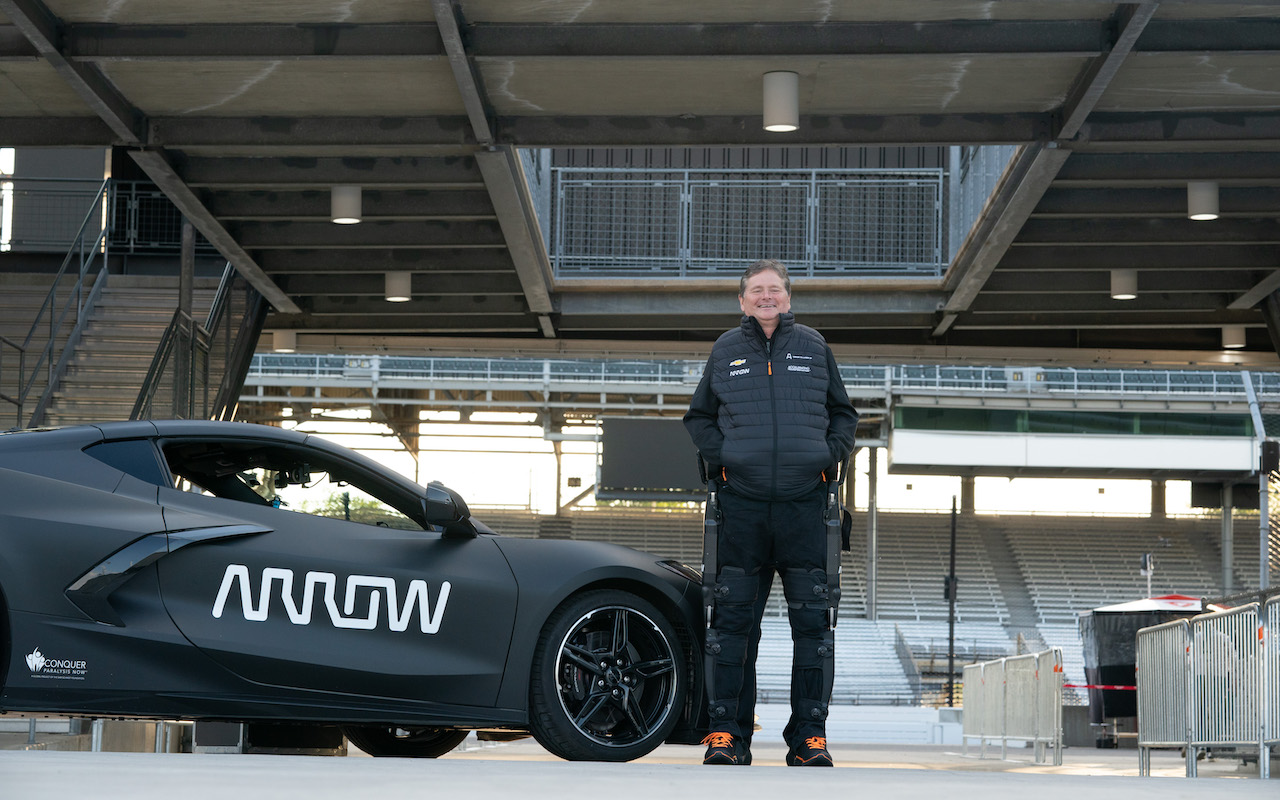
These are tracked by four infrared cameras mounted to the dashboard, which utilise motion capture software to track his head movements in real-time. The signals are then fed into a processor, which translates the data from the camera and sensors to a rotary actuator on the steering wheel. In short, Schmidt turns the vehicle by turning his head.
When it comes to acceleration and braking, Schmidt does this through a straw that goes in his mouth, otherwise known as a ‘Sip and Puff’ system. Data from a pressure sensor is translated to the throttle and brakes; sipping applies the brakes while puffing down the straw engages the accelerator.
Tempus caught up with Schmidt ahead of the legendary driver’s competitive UK debut on the iconic hill climb at the Goodwood Festival of Speed, we caught up with the legendary driver to and discovered what ignites his competitive spirit to this day.
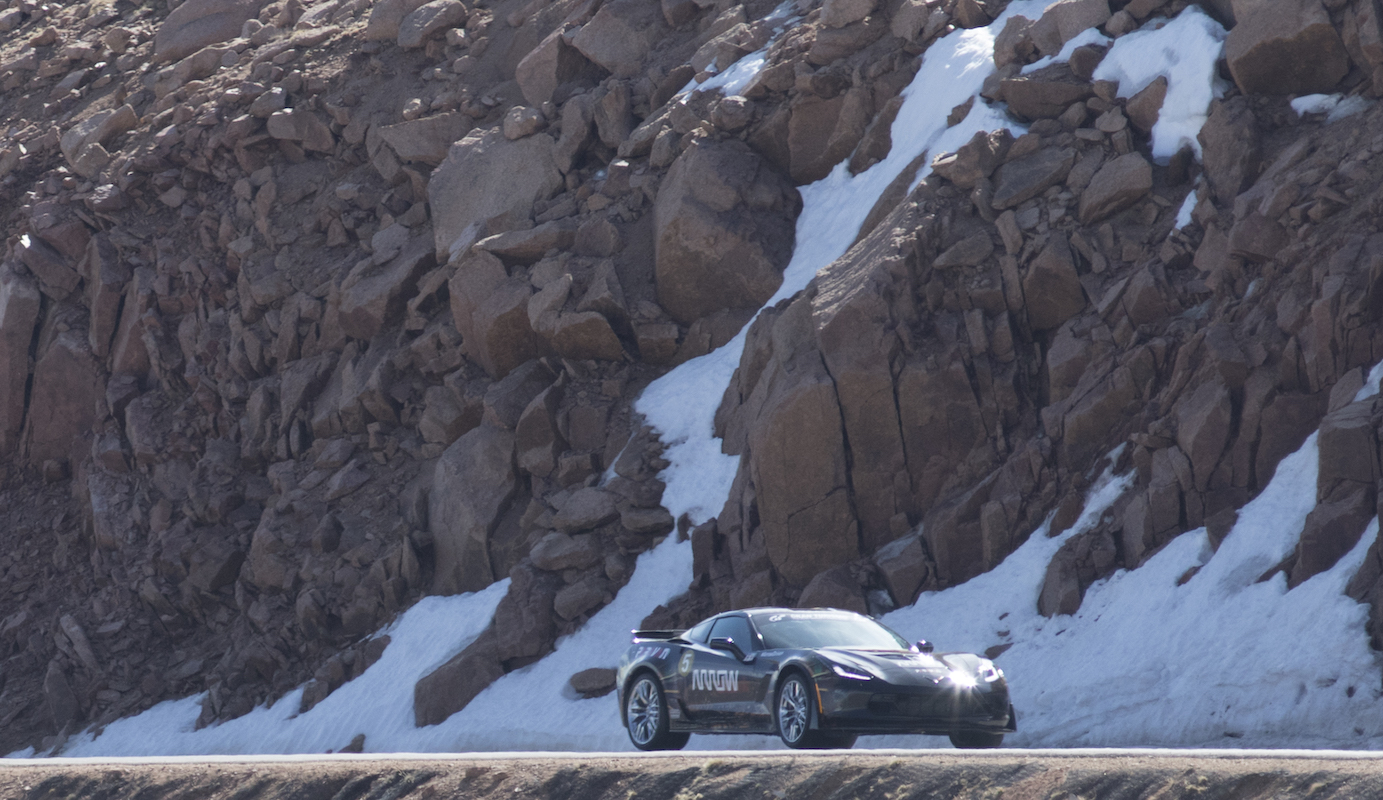
What stage of your career were you at when you had your life-changing crash in January 2000?
I’d been racing since I was about five years old in Motocross but my dream was always to race in the Indy 500. Living in Southern California, Rick Mears was nearby and raced in the Indy 500 for Roger Penske, so I became just laser-focused on that growing up as a racer. I didn’t have the funding to be able to take part initially but, finally, I got the funding to race in Indianapolis in 1997, ‘98 and ‘99.
In September of 1999, we made it to Pole and won the race in Las Vegas, so I was really at the top of my career then. I’d spent three years in IndyCar by that point and I was one of the favourites to win the championship the following year in 2000.
What do you recall of the crash?
We had started pre-season testing for the 2000 season in January when my car hit the wall at 200mph. I blew apart a C3 and C4 vertebrae in the impact and was taken to hospital. They didn’t think I would make it through the night but then, after I did, they said I’d be on a ventilator for the rest of my life. I guess I’ve been trying to prove people wrong ever since.
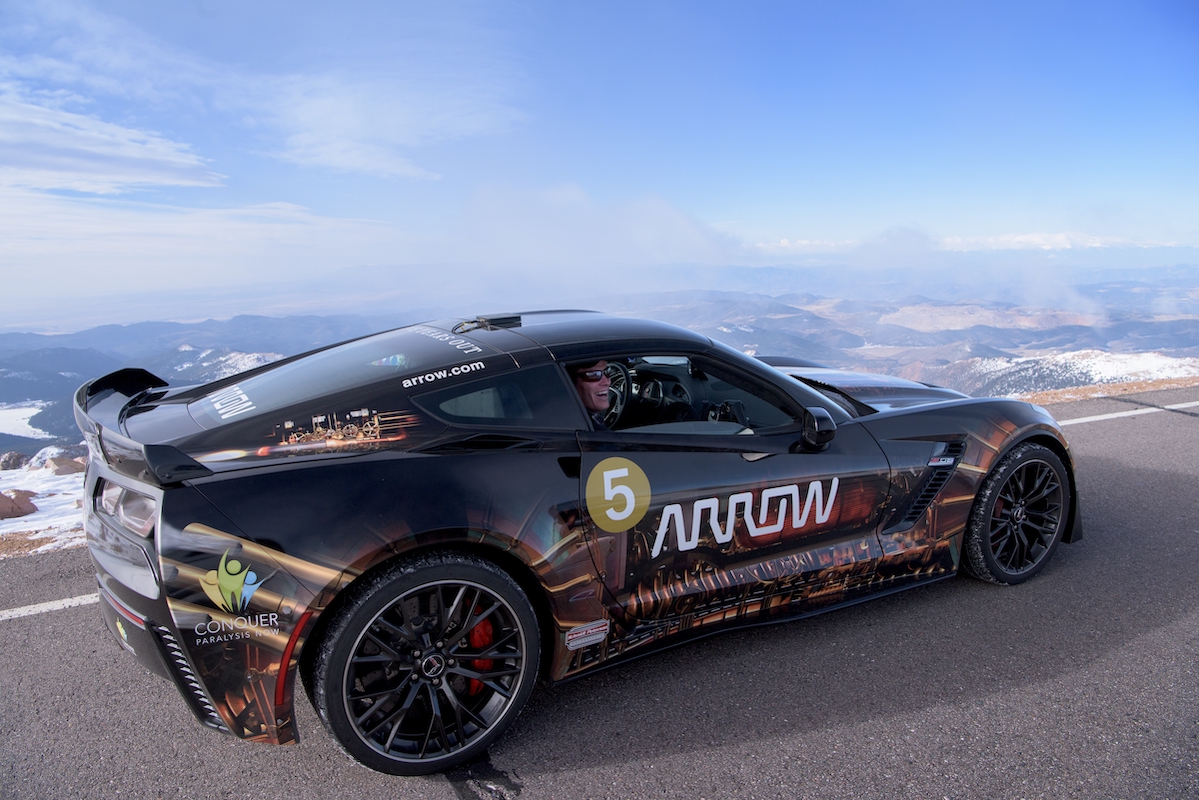
How did you find adjusting to your new way of life?
My son was six months old at the time and my daughter was two and a half. One of the things people just don’t realise is, although I’m the one in the chair, it really turns everybody’s life upside down. I had to completely reorganise my life. I went from being a very independent professional race car driver to not being able to do anything for myself. I started six months of really intensive physiotherapy, which I’ve continued to do for at least two hours a day for the last 21 years.
Once I was off the ventilator, I got a lot of strength back in my neck and my diaphragm, so I was able to travel, but I never got the use of my arms or legs back. So, we had to design a programme whereby my wife would focus on the kids and I could go out and get a job. I was fortunate because I had an MBA. I also have really good insurance and a community that supports me, and it didn’t take me long to realise that I’m that 1% who can say that, because 99% of people don’t have good insurance or the support of a family. In this situation, for example, the divorce rate is 85%, so I’m very fortunate that my wife has stuck with me.
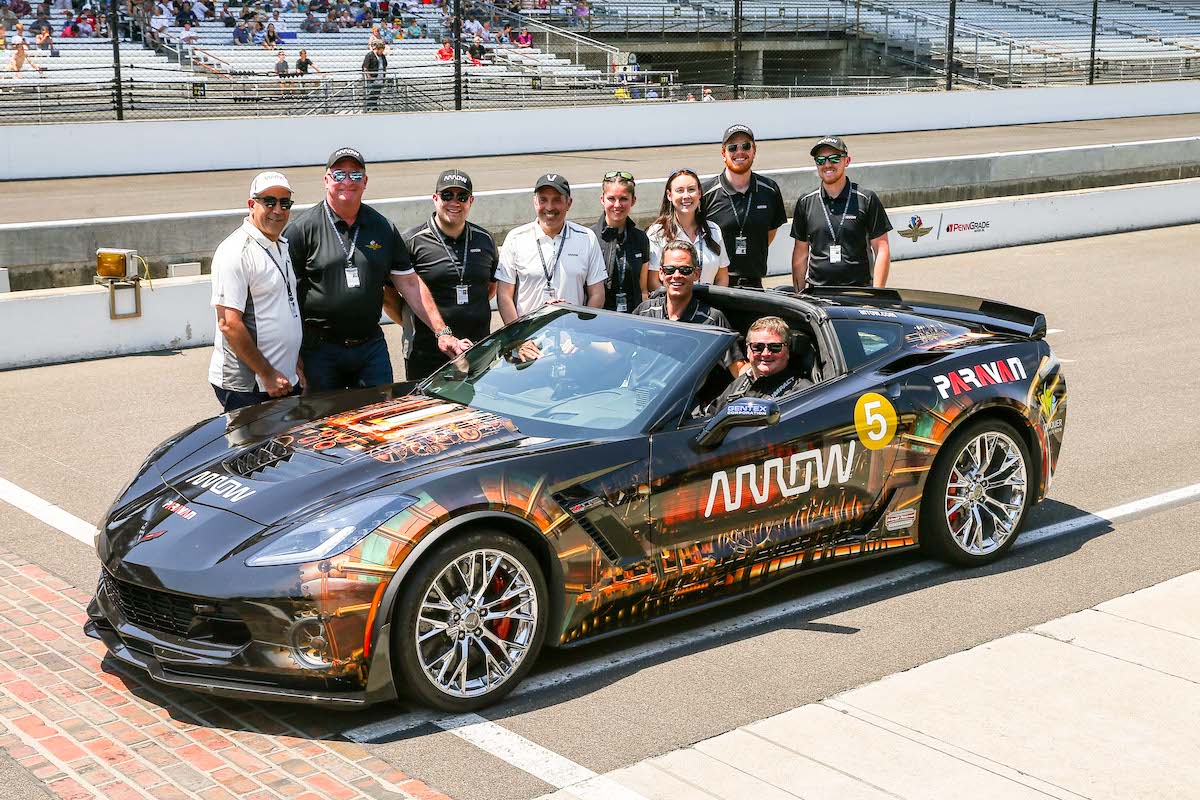
Did you ever imagine you’d be back in a car again?
Hell no! But the technology is amazing now and Arrow is at the forefront of emerging technologies. This car I’m sitting in is a perfect example. We were driving our first prototype within six months, which is completely amazing. Of course, it was different to what we have now – just like how your cell phone has evolved. The SAM III has been seven years in development, finally goes over 200 miles an hour and we hauled ass at the Goodwood motor circuit the other day. It really is just a blast – and it all comes back to you pretty quickly.
What’s it like to take on Goodwood’s infamous hill climb?
You know, I’ve always just looked at this event from afar, thinking I’d love to just go and be a spectator or walk around the place, but to be able to come here and actually participate is a total dream come true.
Do you have plans to return to competitive racing?
Yes, we recently did our first competition, although it wasn’t on the radar, but this new mid-engine car has got unbelievable handling. There’s a series in the States called the Optima Streetcar Challenge so, back in April, we showed up in Las Vegas against a field of highly customised Corvettes and other vehicles. We competed head-to-head with around 100 competitors and ended up somewhere in the 60s after doing Autocross, a road course and a drag race. So now we’re just going to make the car faster and to make me a better driver!
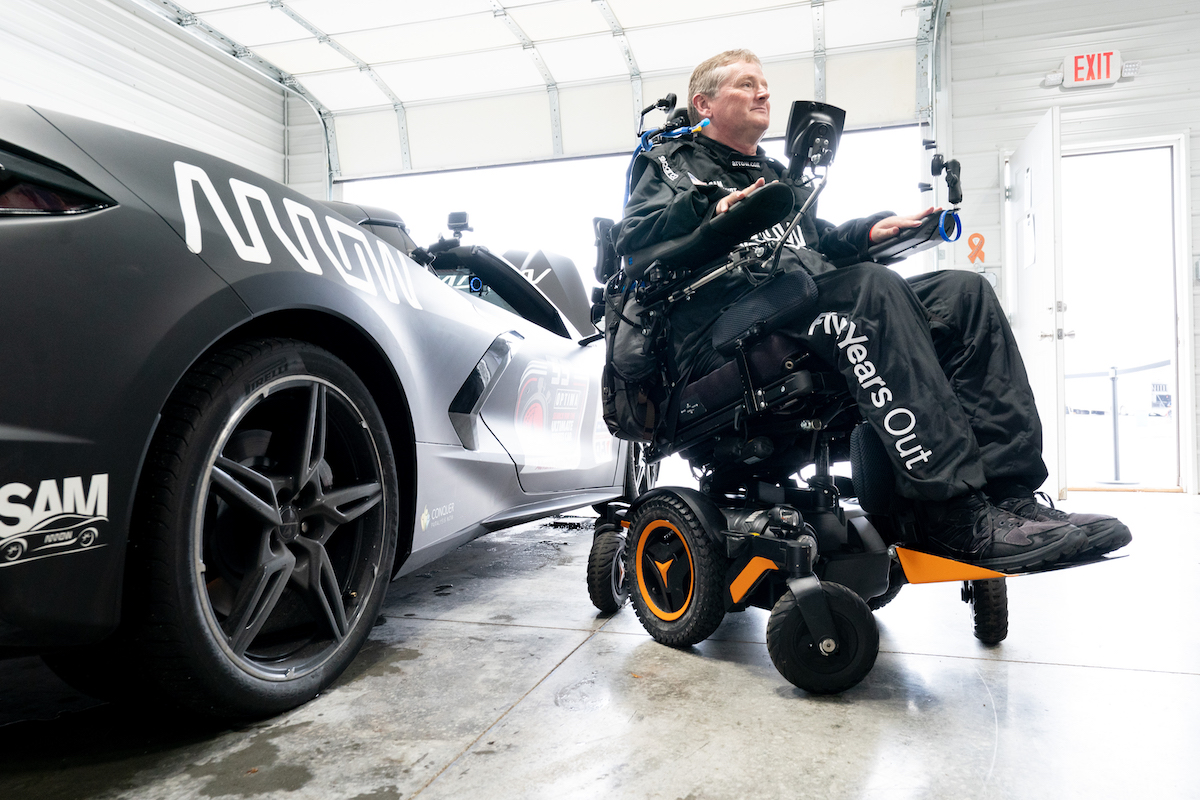
What advice would you give to someone starting in their journey with a disability?
The truth is, it sucks. Really, you just have to find your passion. It could be computers, it could be competing in the Paralympics, it could be athletic ventures or even being an advocate for others with disabilities. There are so many opportunities. Also, embrace technology: voice-controlled technology has come on so far in the past five years, with assistants like Siri and Alexa to help with all my emails, texting and phone calls.
Ultimately, the world is out there. The only thing holding you back is your own attitude and your own ability to go after it. There are a lot of state-funded programs for people with disabilities and you’ve just got to take advantage of them.
Tell us about your foundation?
We have a foundation called Conquer Paralysis Now, and we opened a neuro-recovery centre in downtown Las Vegas called Driven. Its main purpose is to try and find cure for paralysis and to help those that already have disorders – not just spinal cord injuries, but [Motor Neurone Disease] and multiple sclerosis as well.
It’s amazing how much demand there is, and how many people are living with some type of paralysis. In the US, around 1.8 million people have paralysis and eight million have a mobility issue. We’re focused on trying to solve those problems and creating an environment where they can pursue their passion.
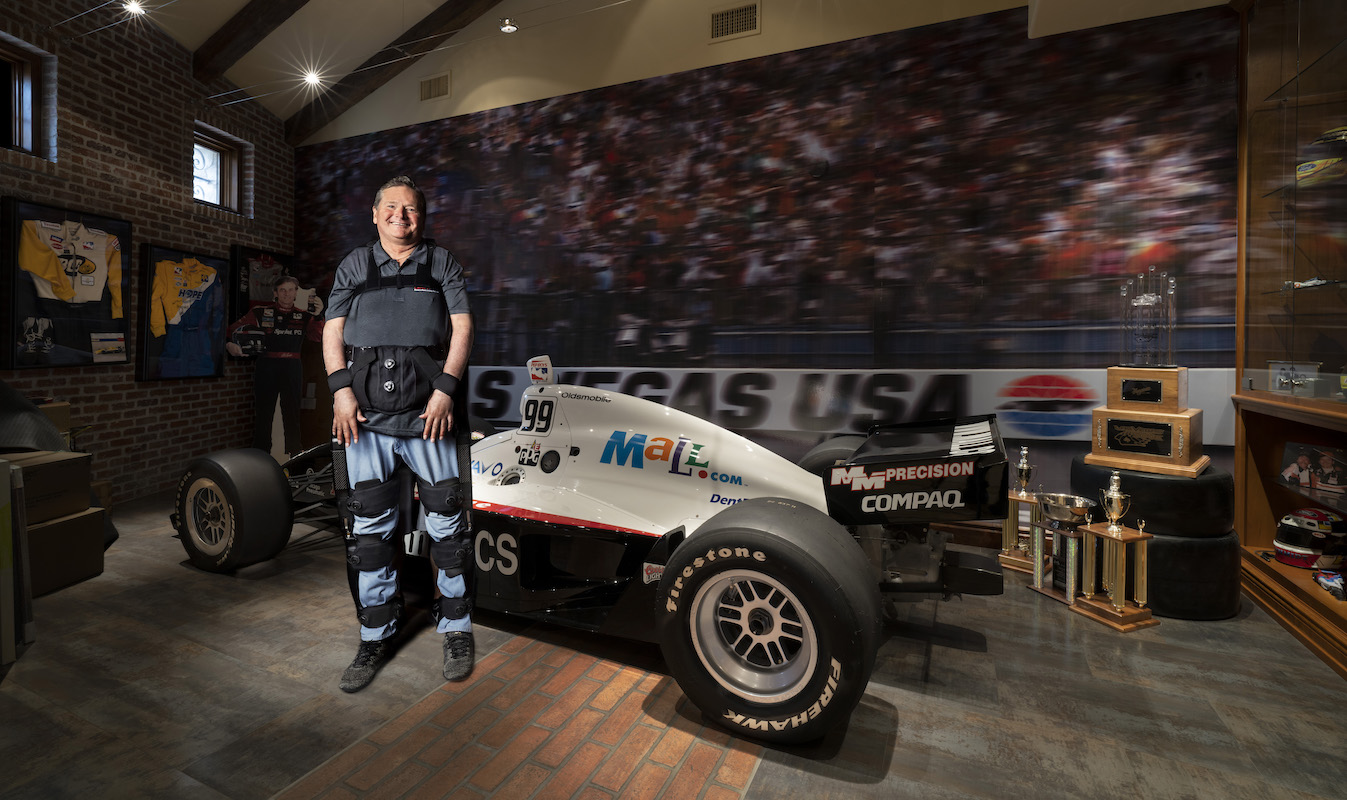
What are your goals for the future?
Well, the cool thing is being able to compete against able-bodied people. Even people withoutalotofresourcescancompetewith able-bodied people virtually. For instance, I have a simulator and can compete on iRacing against anybody. Arrow has continued to support us, too.
They customised an exoskeleton for me that will let me dance at my daughter’s wedding. They have a good go at making it happen, whatever I throw at them! I hear some people are selling tickets to the InternationalSpaceStation,soitcouldbekind of cool to go the Moon.





